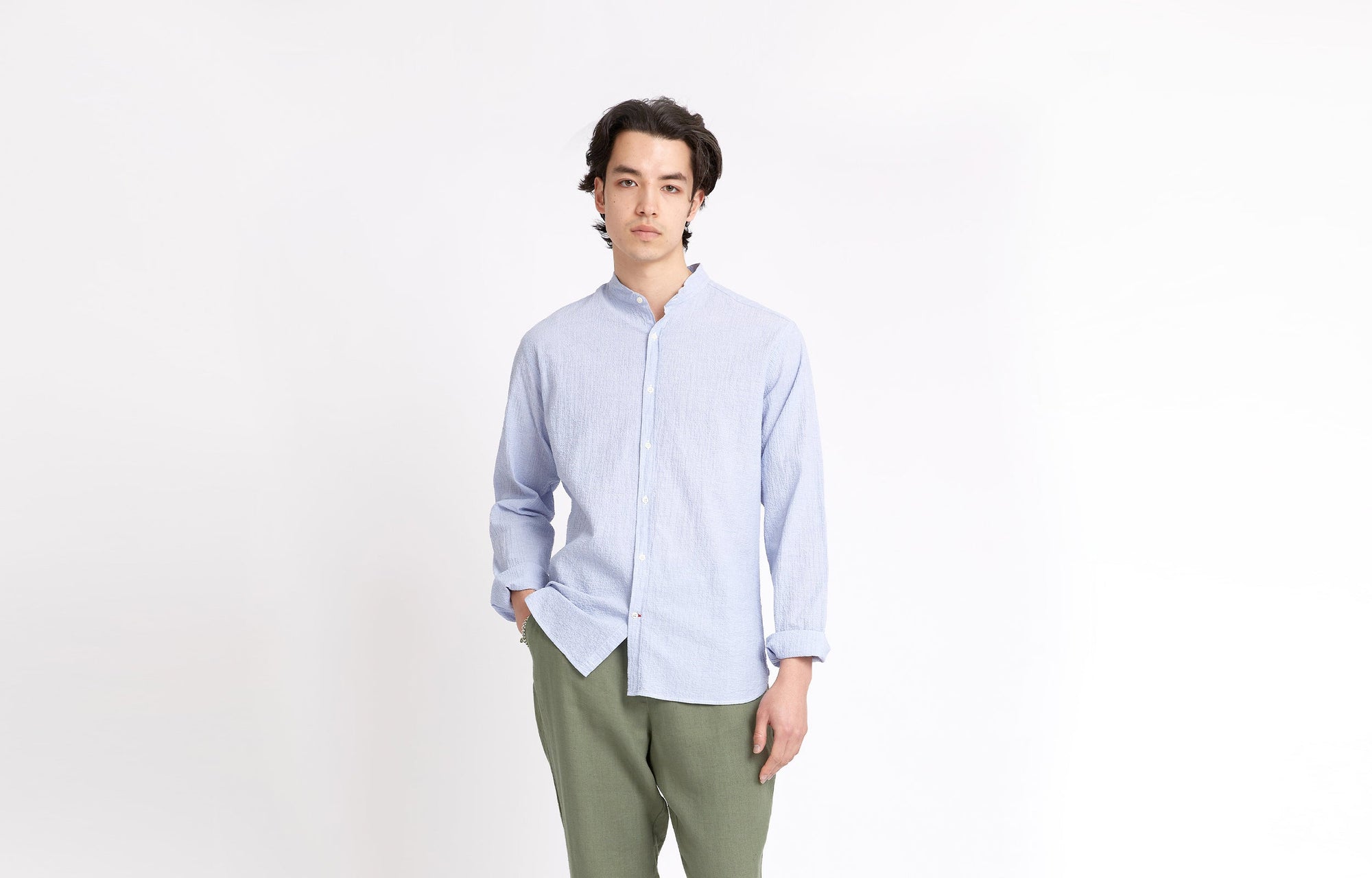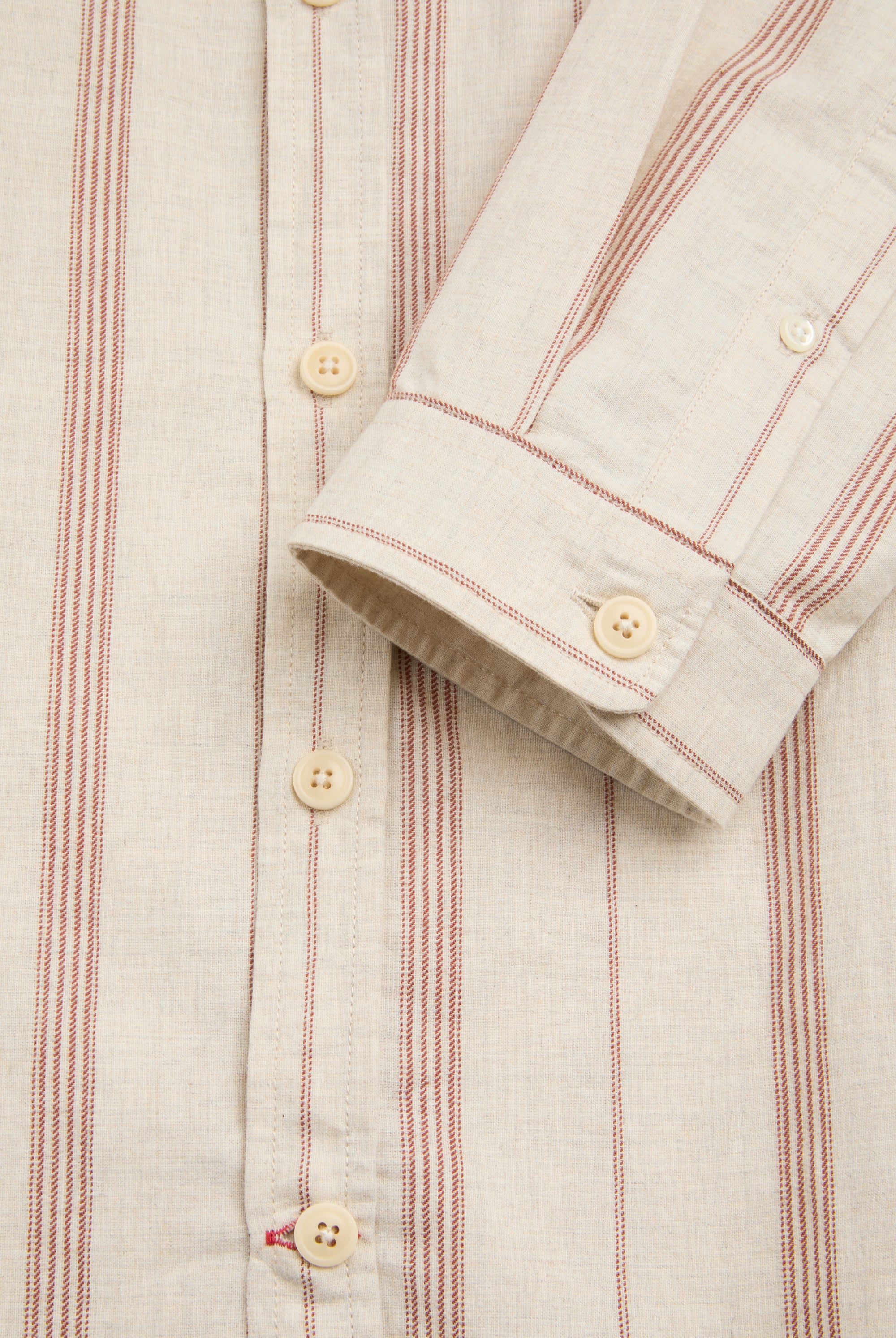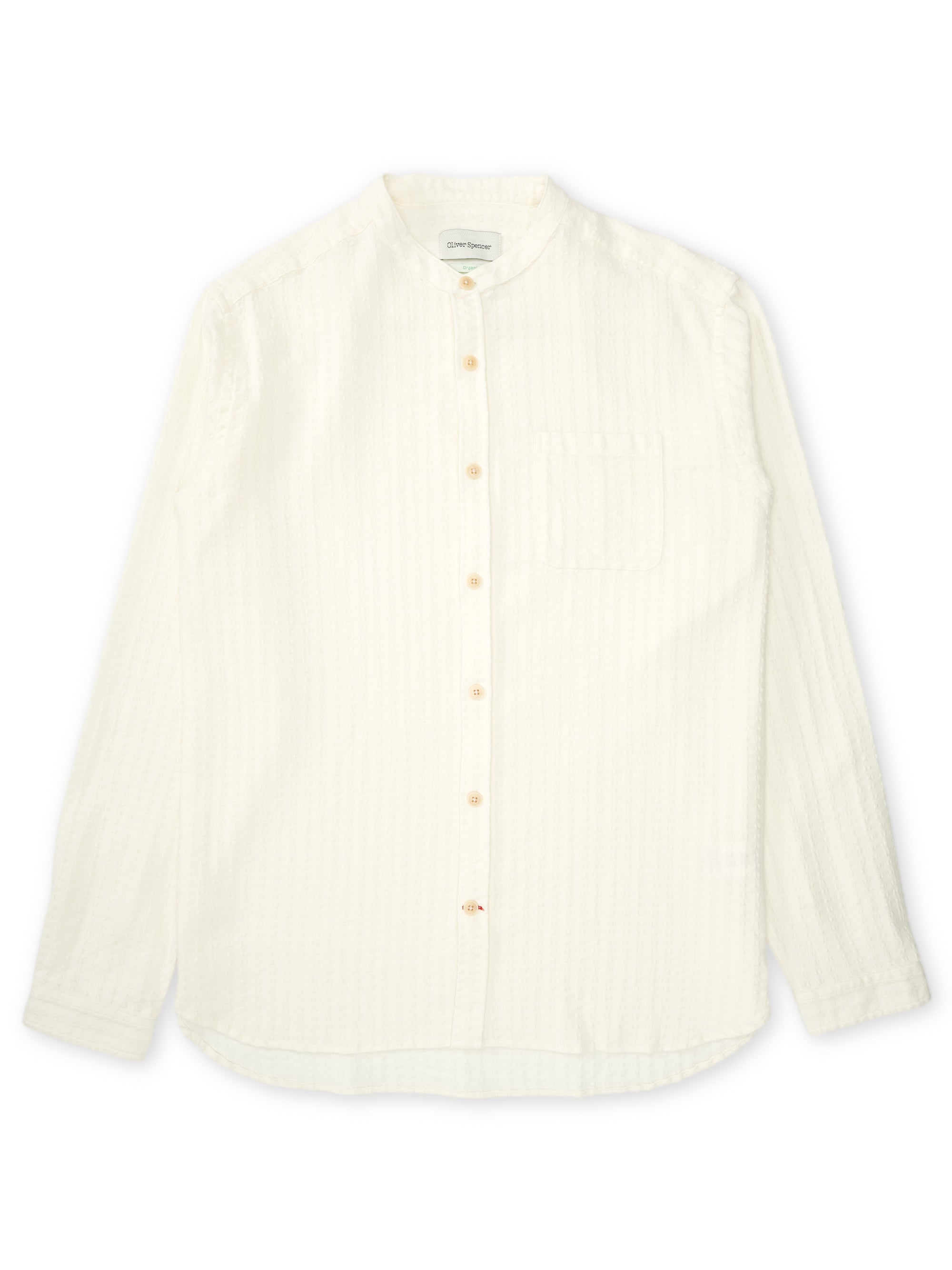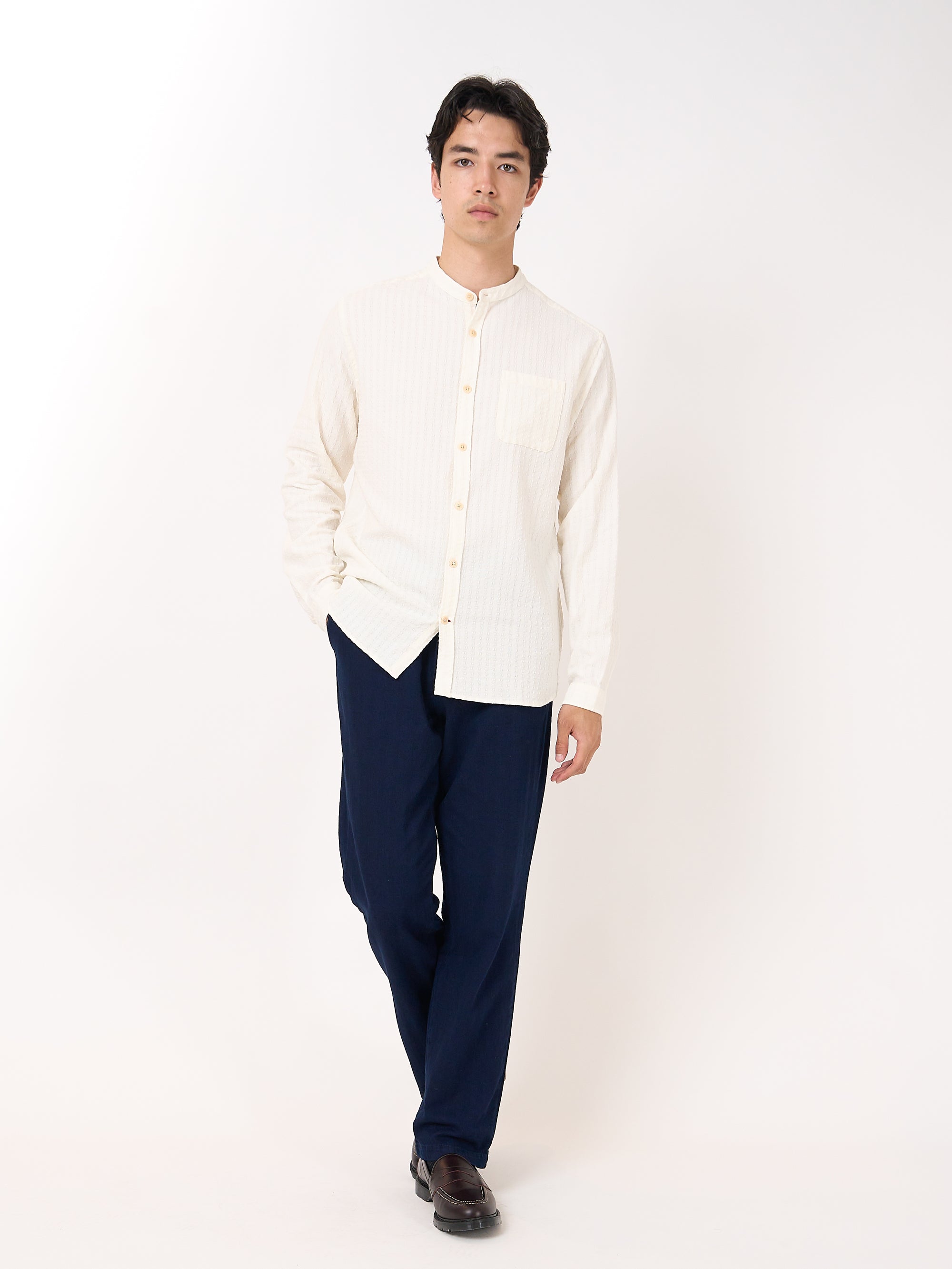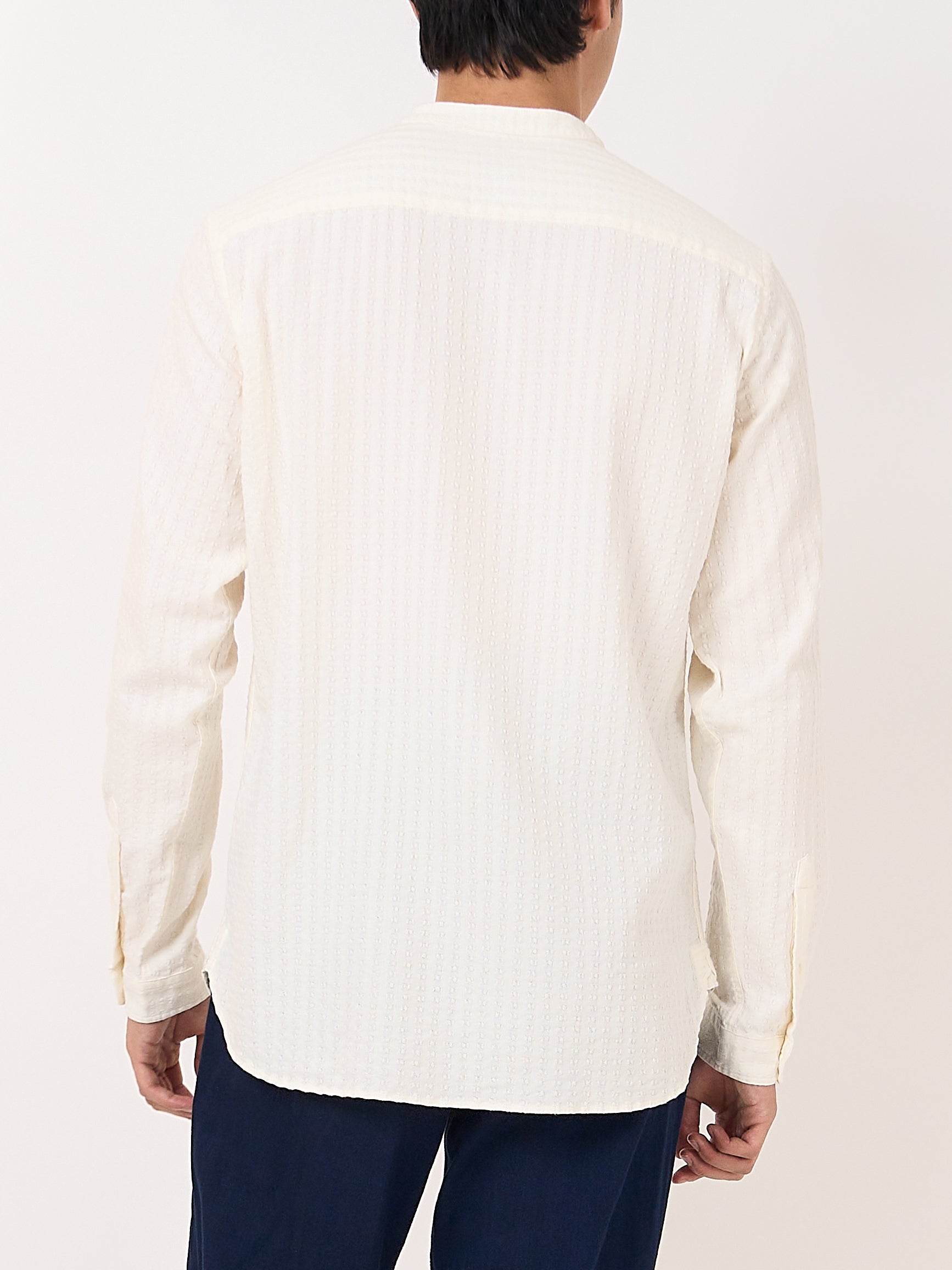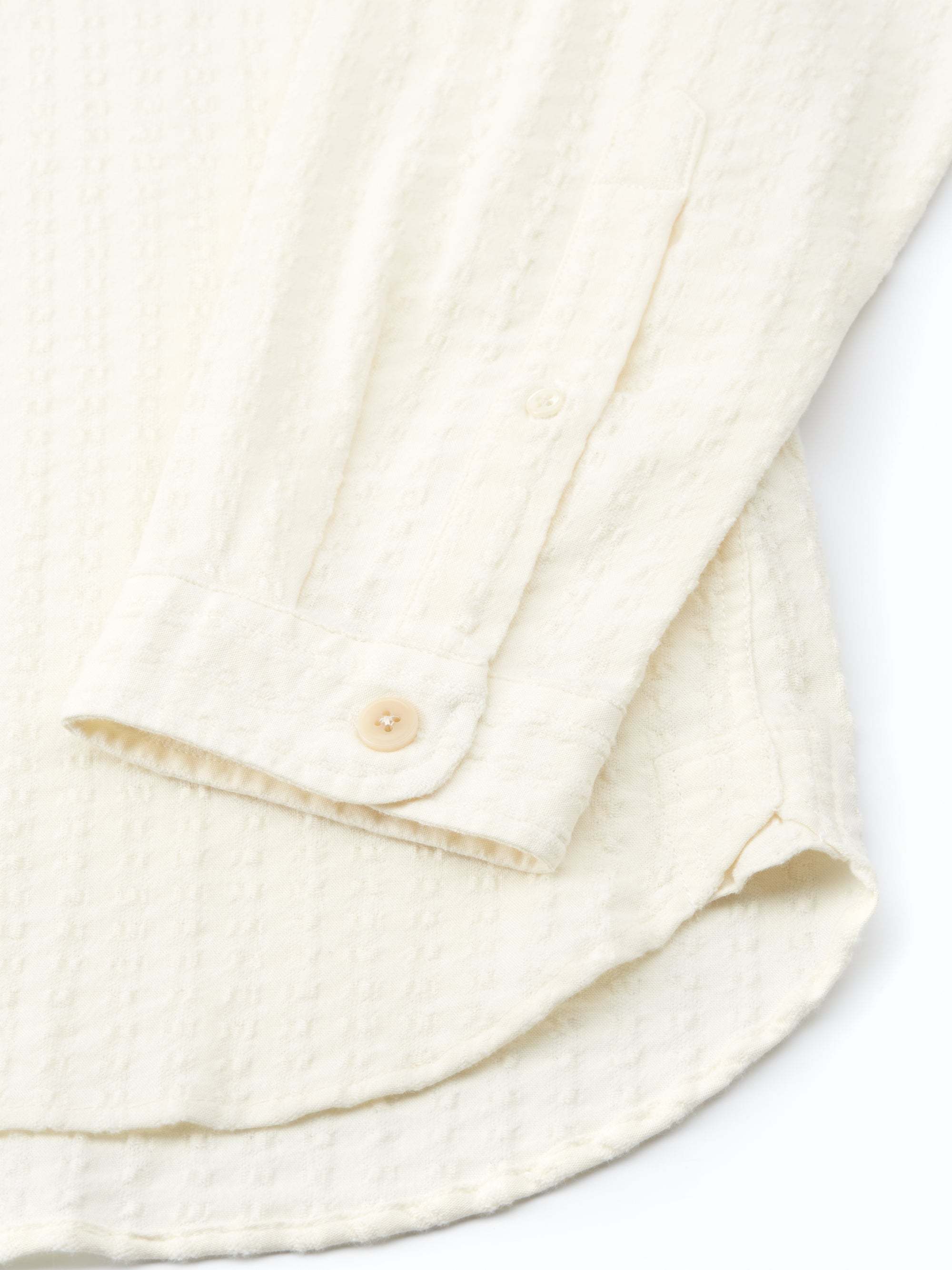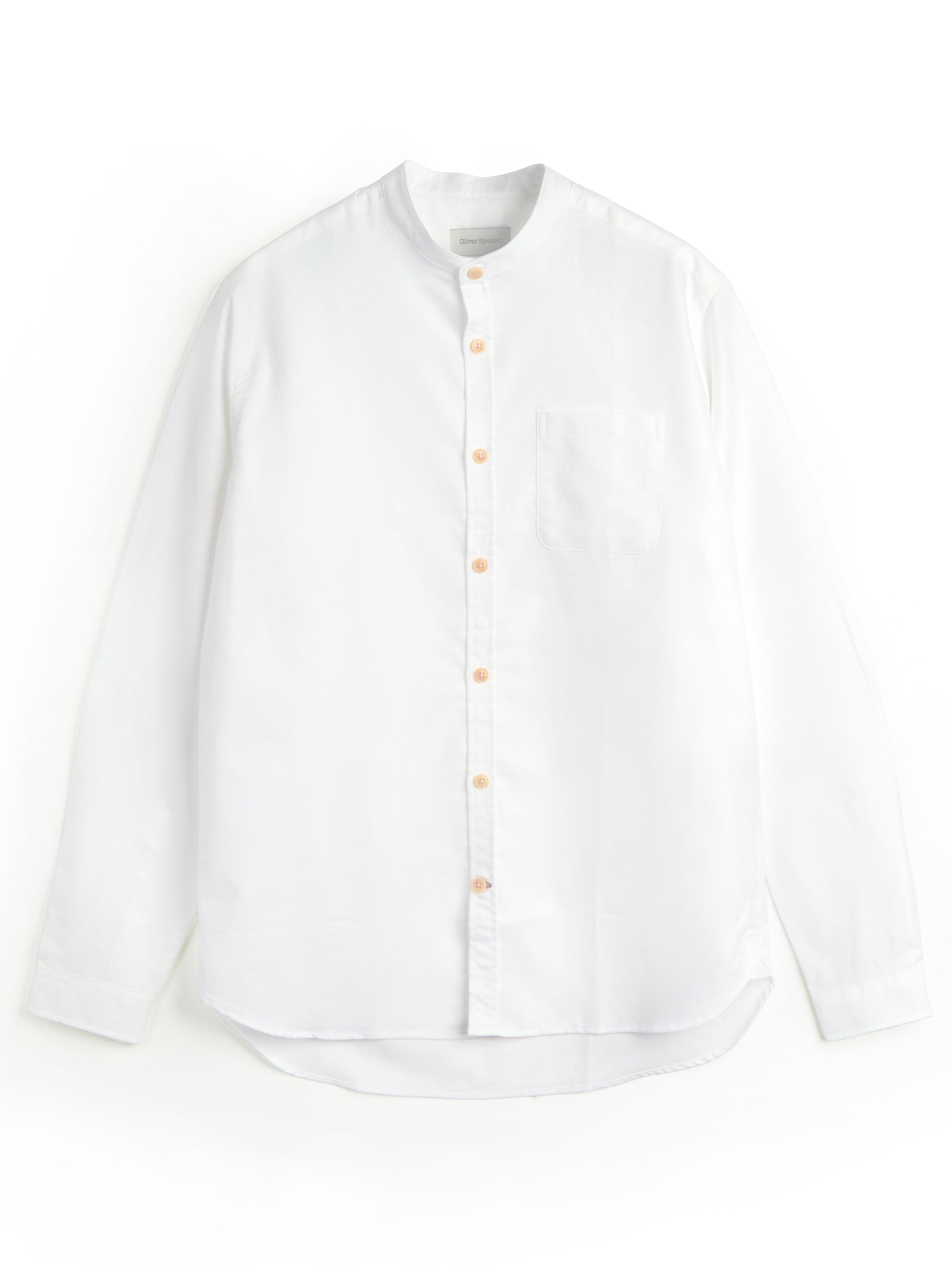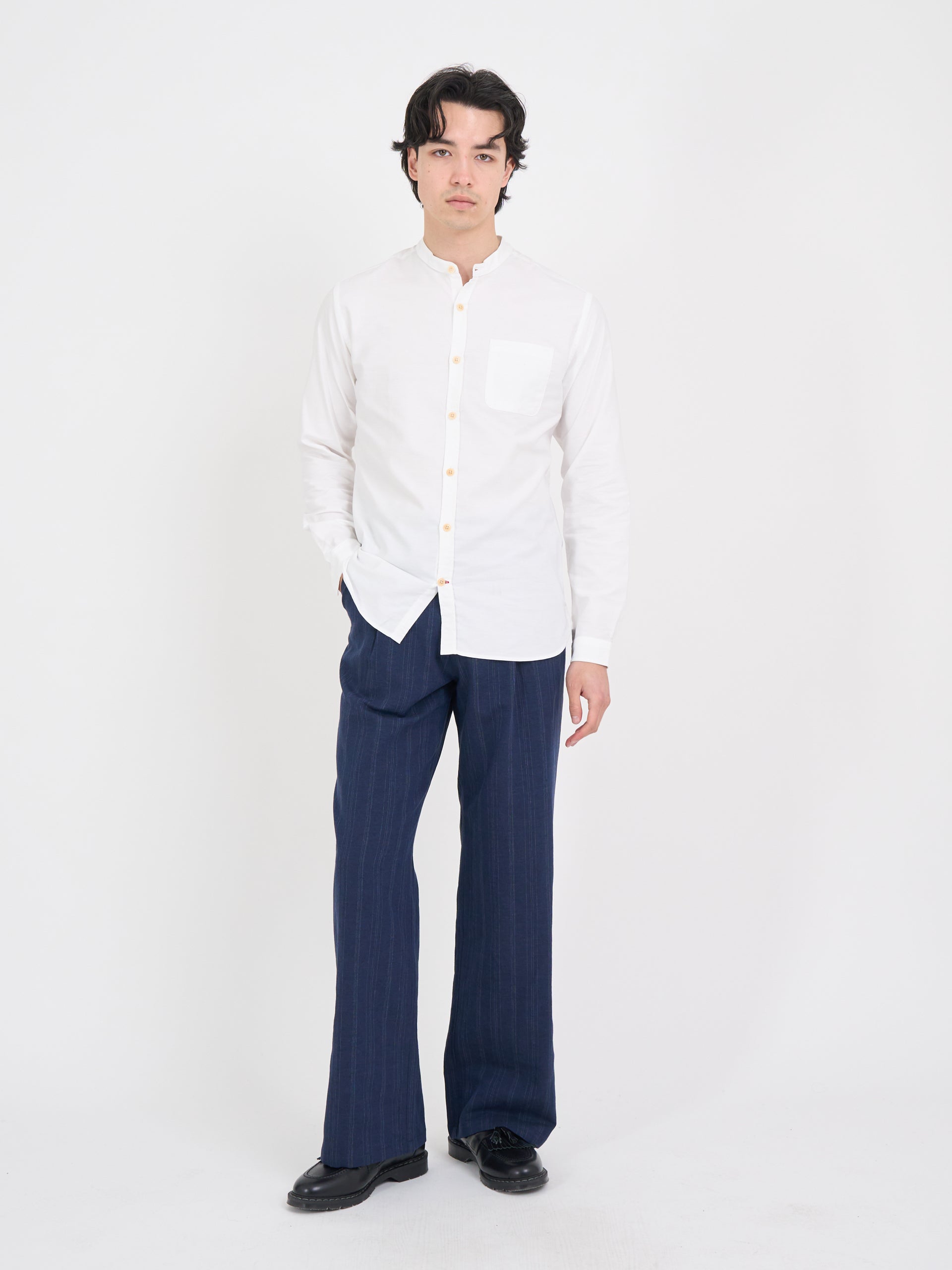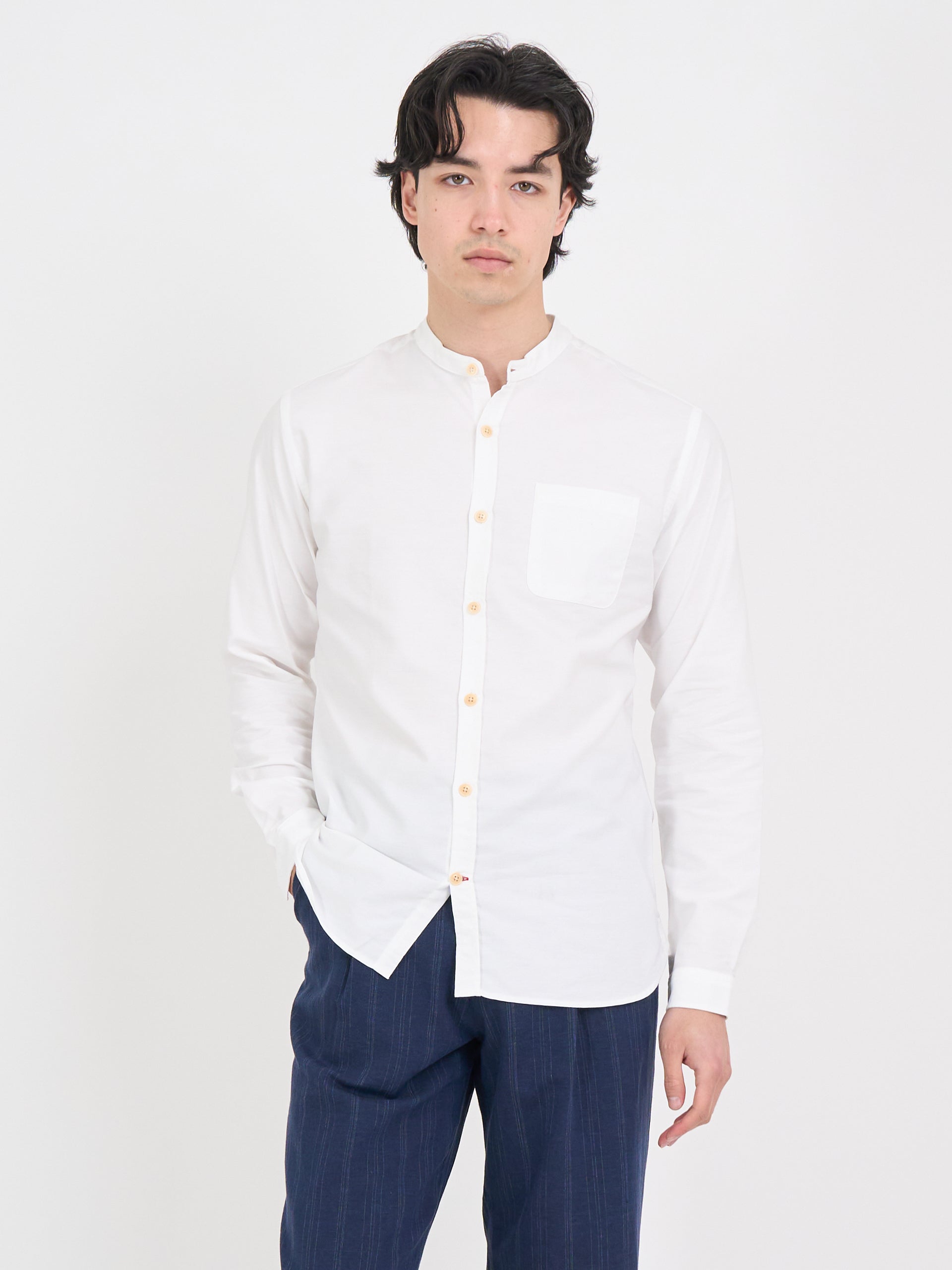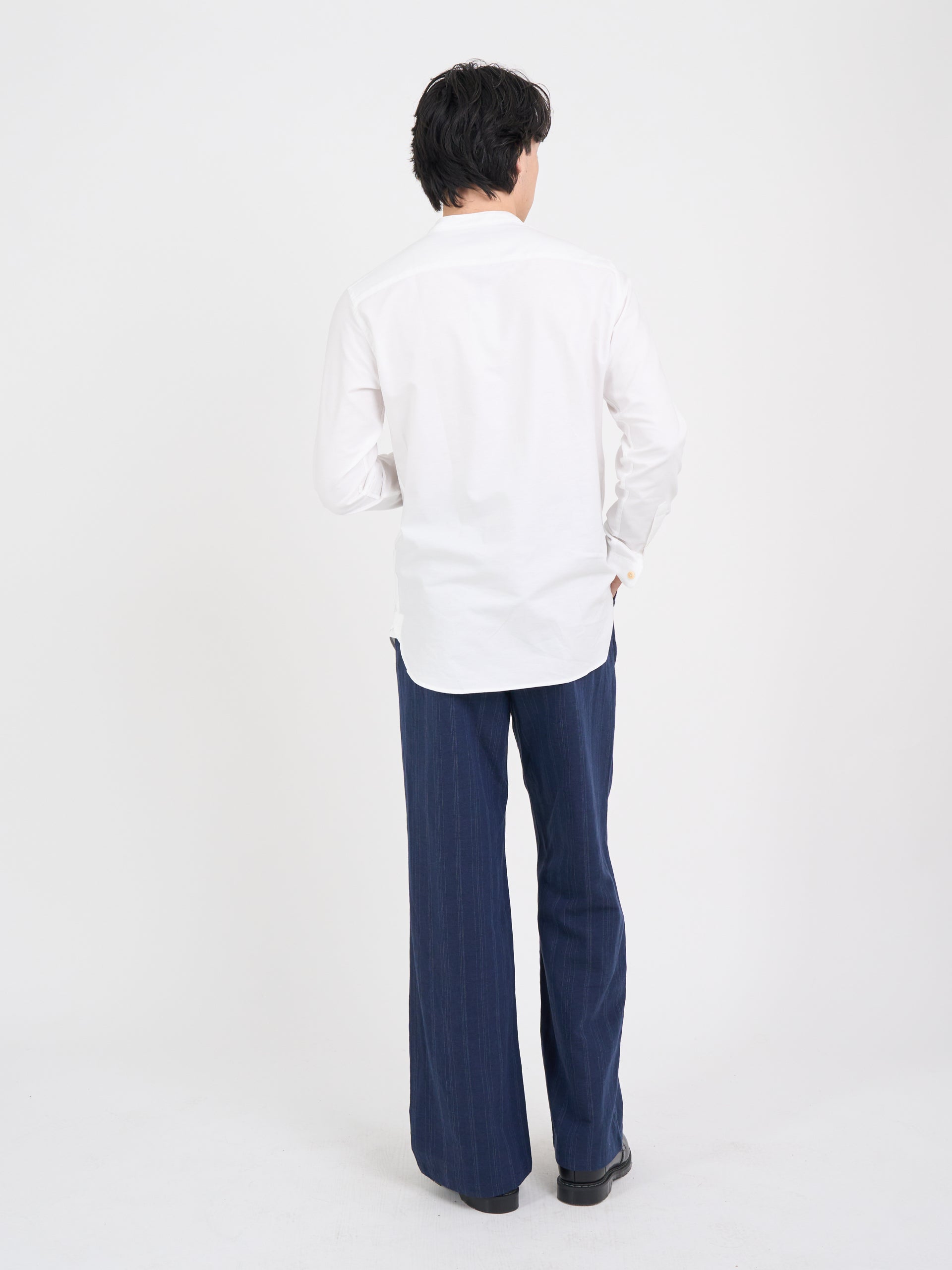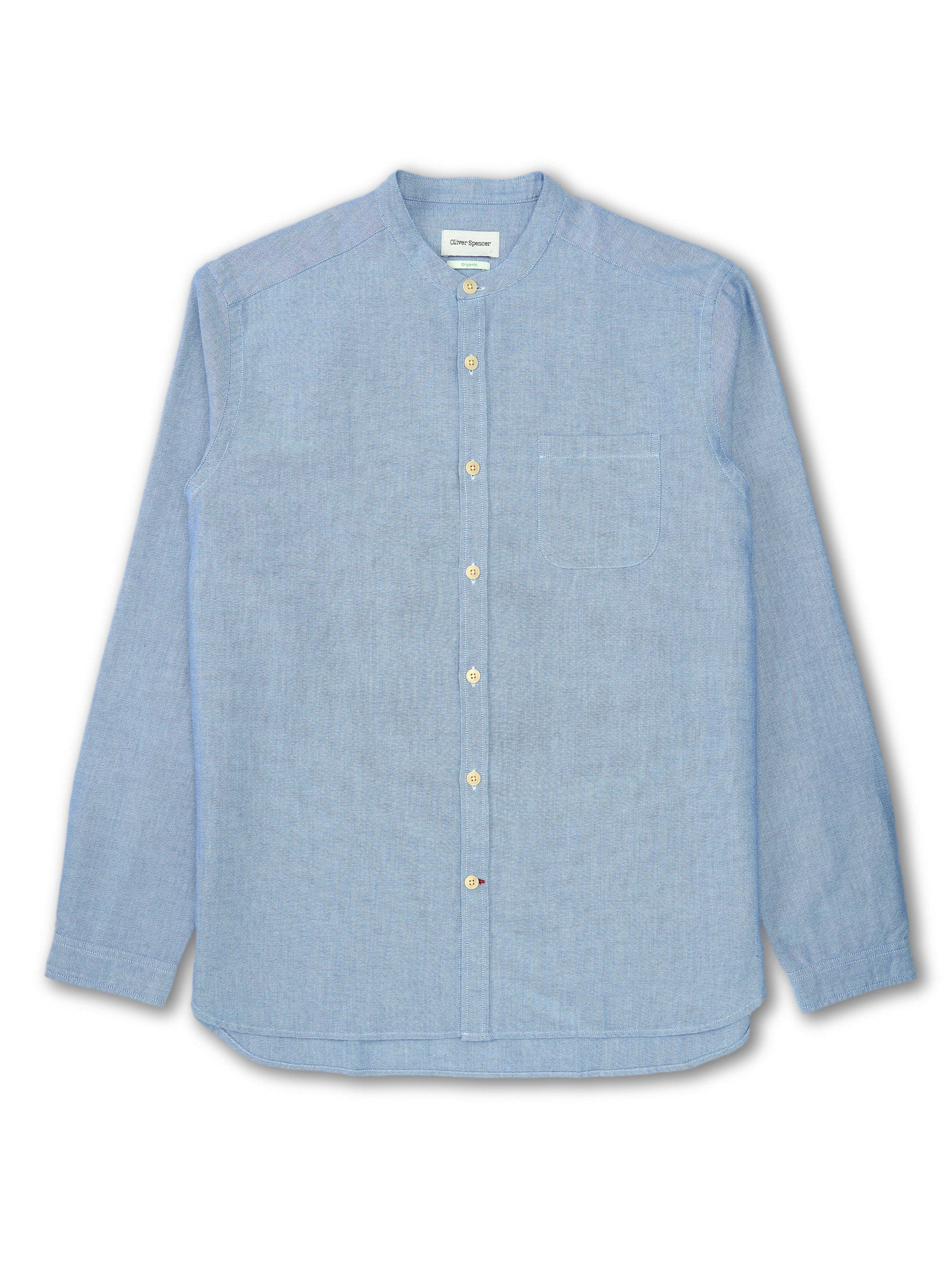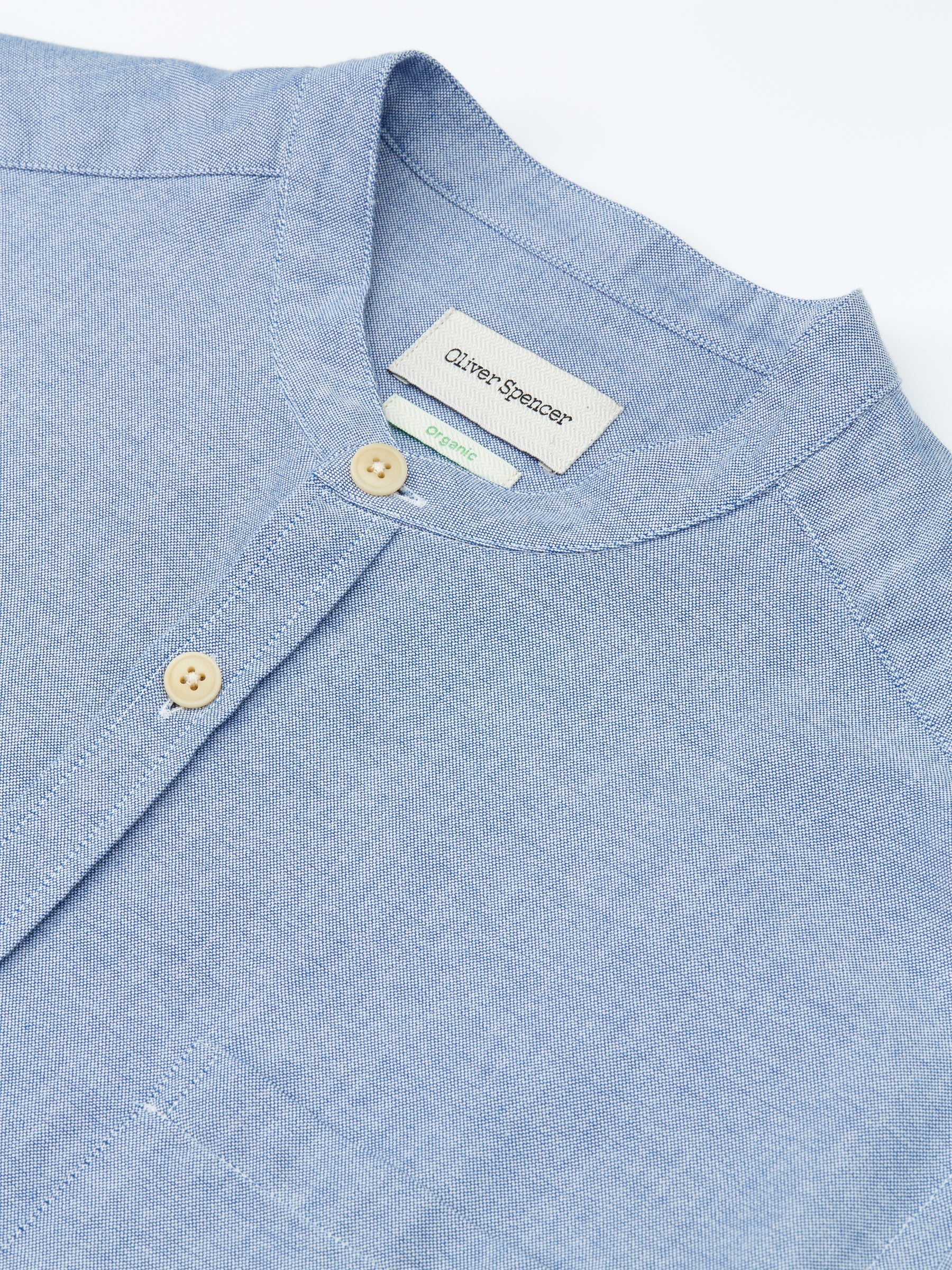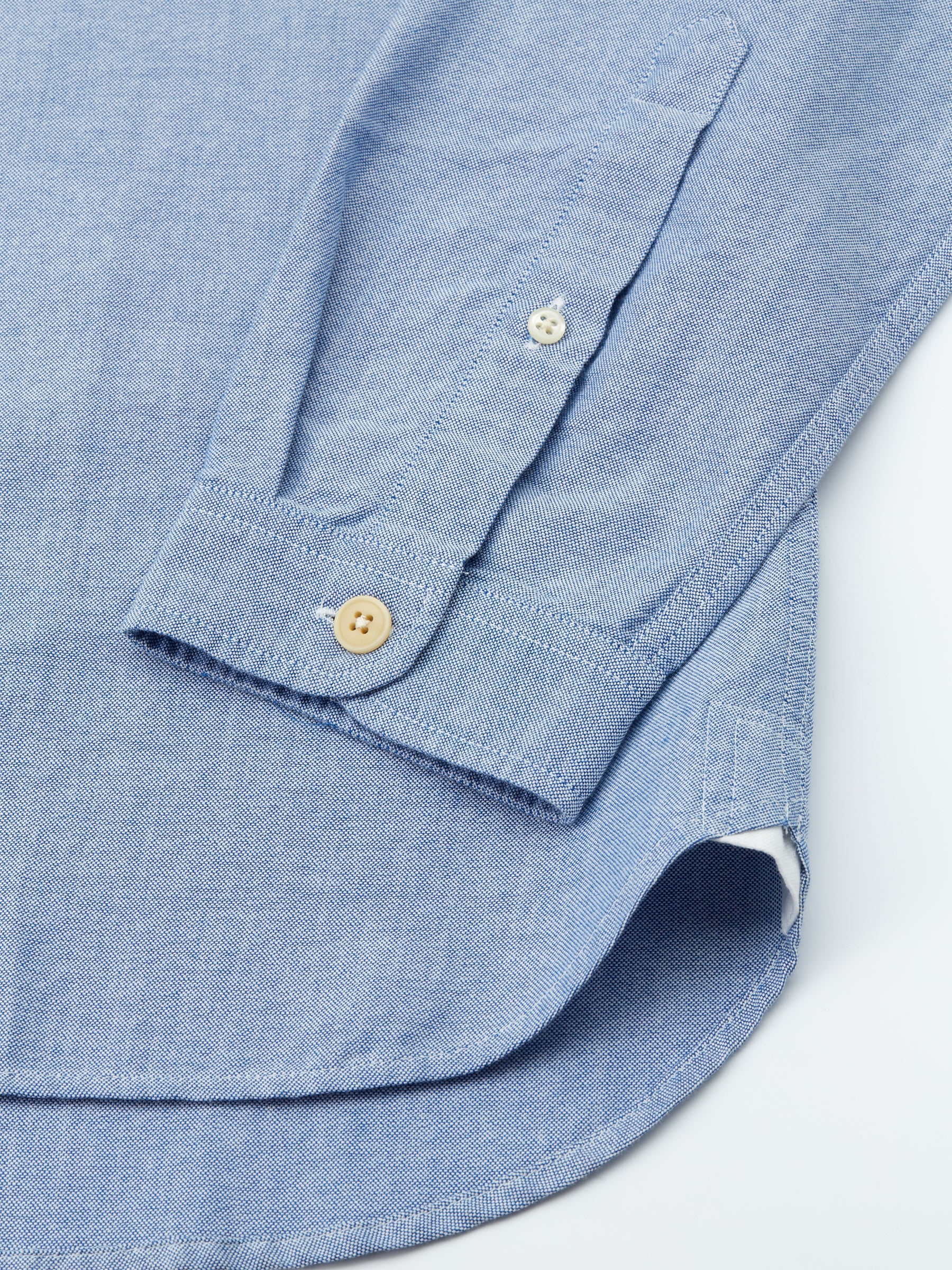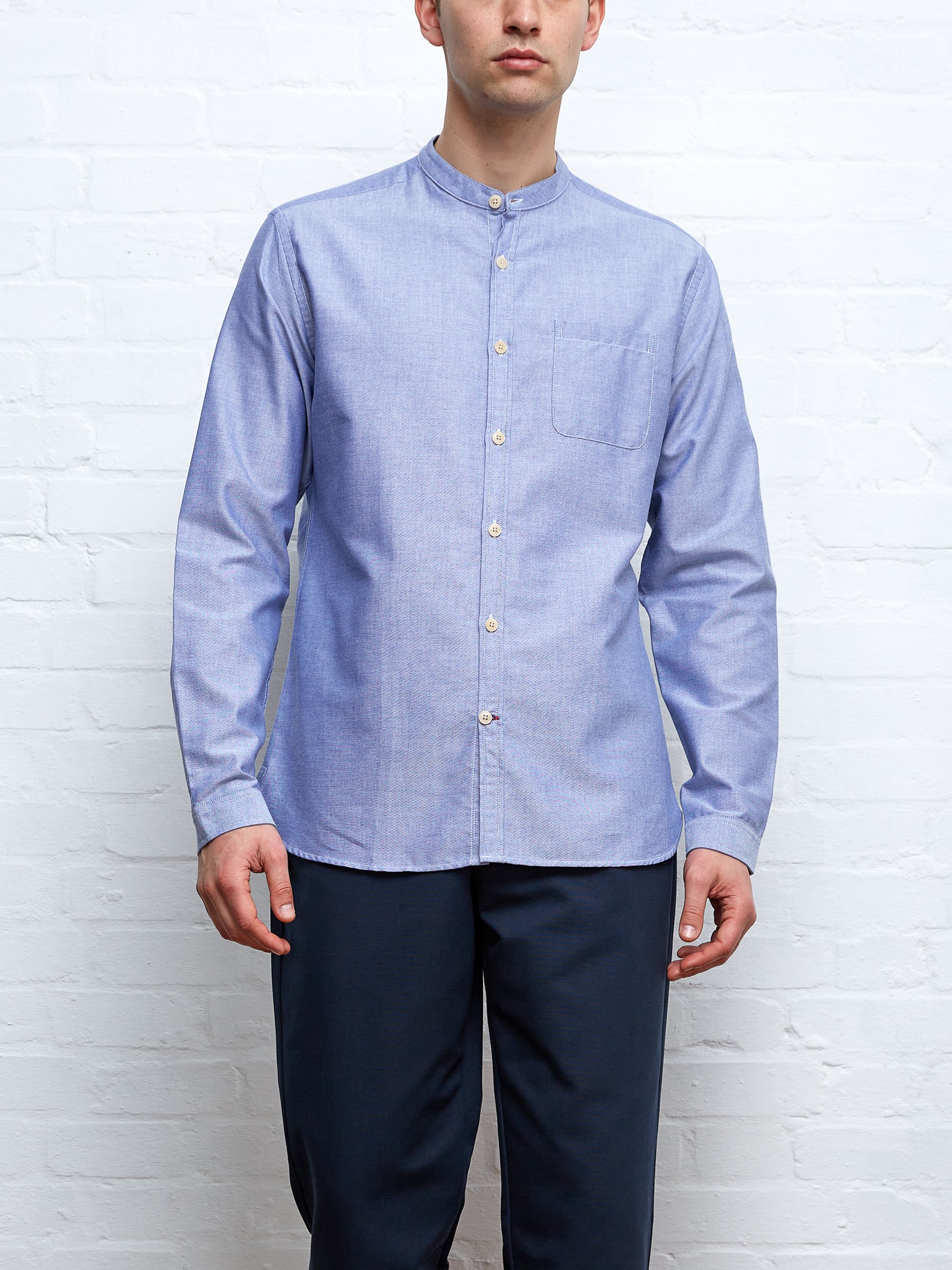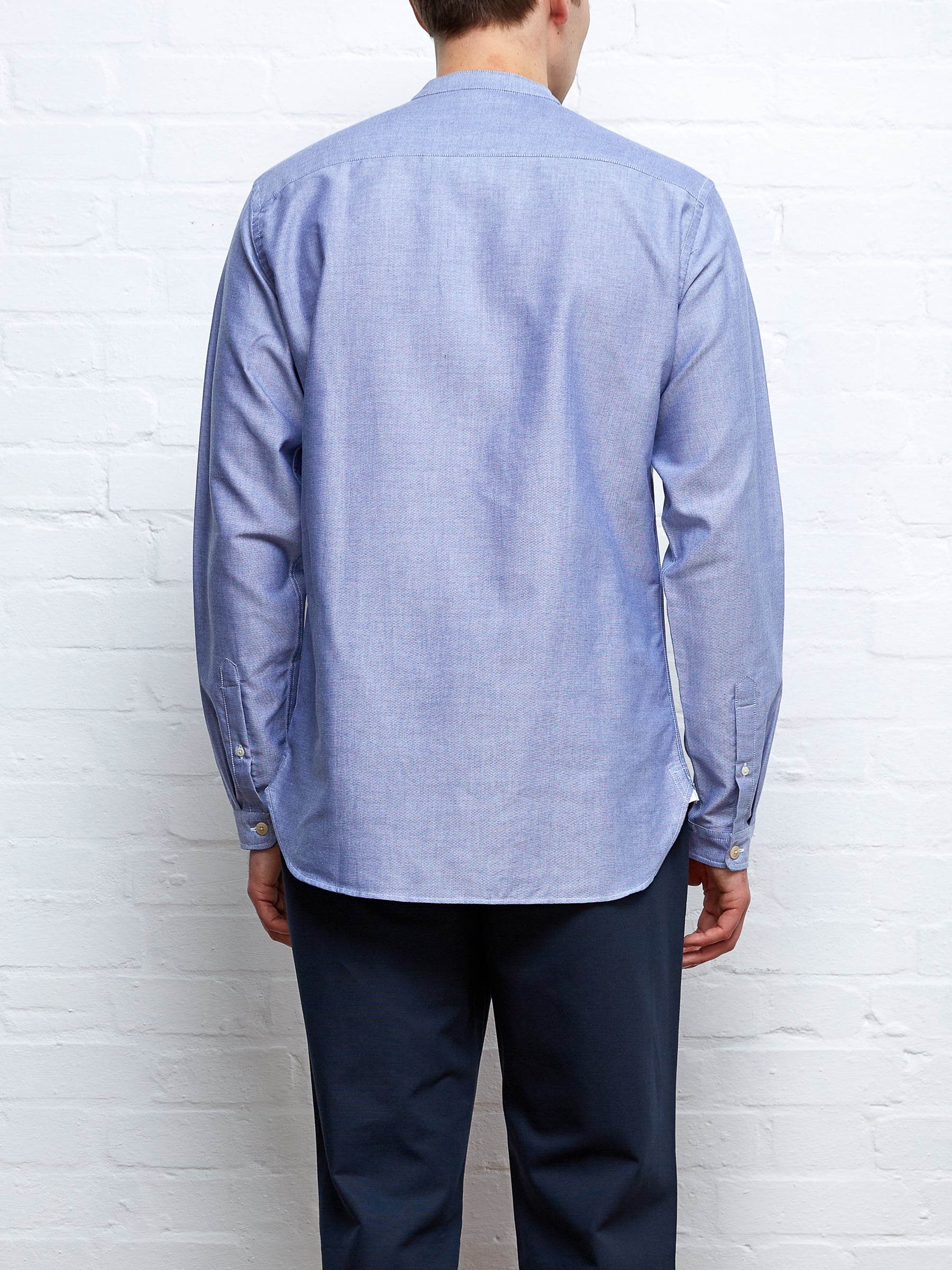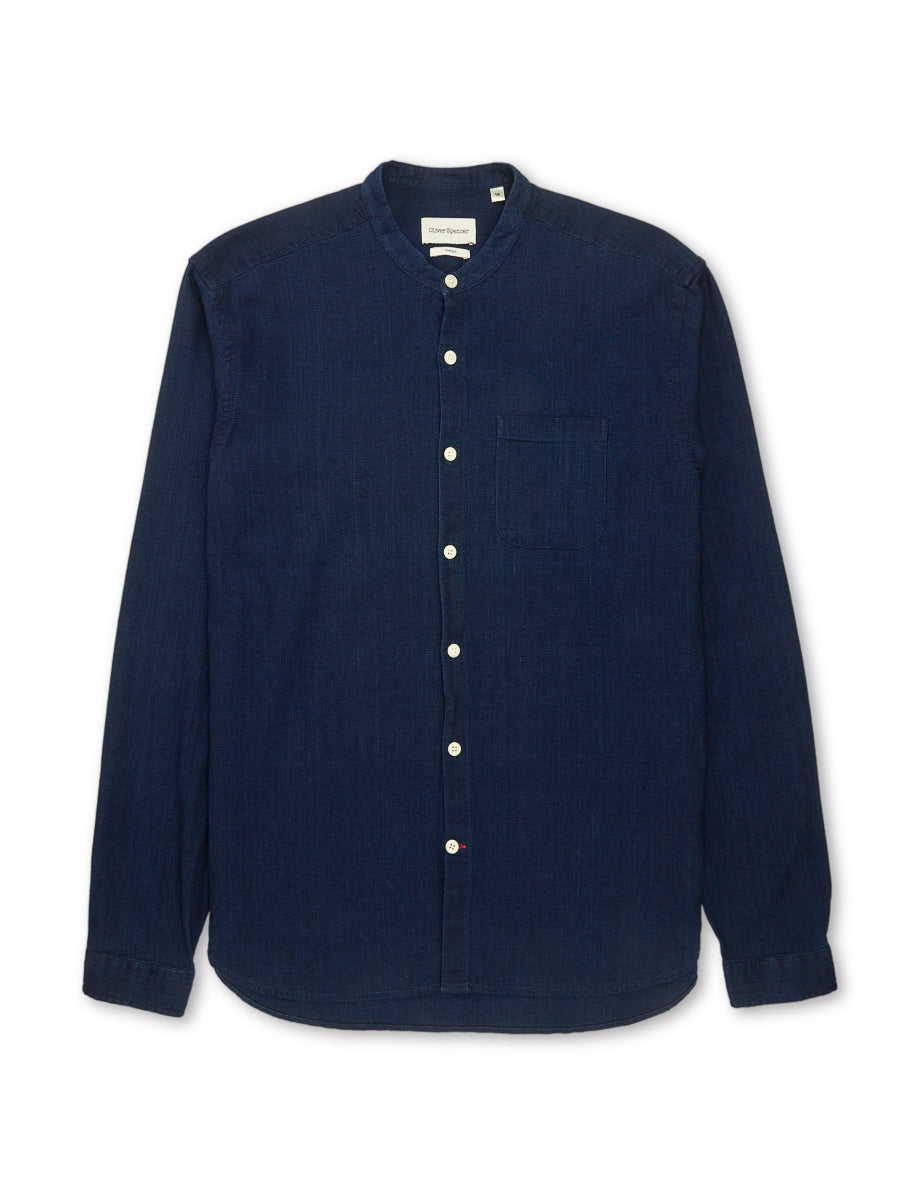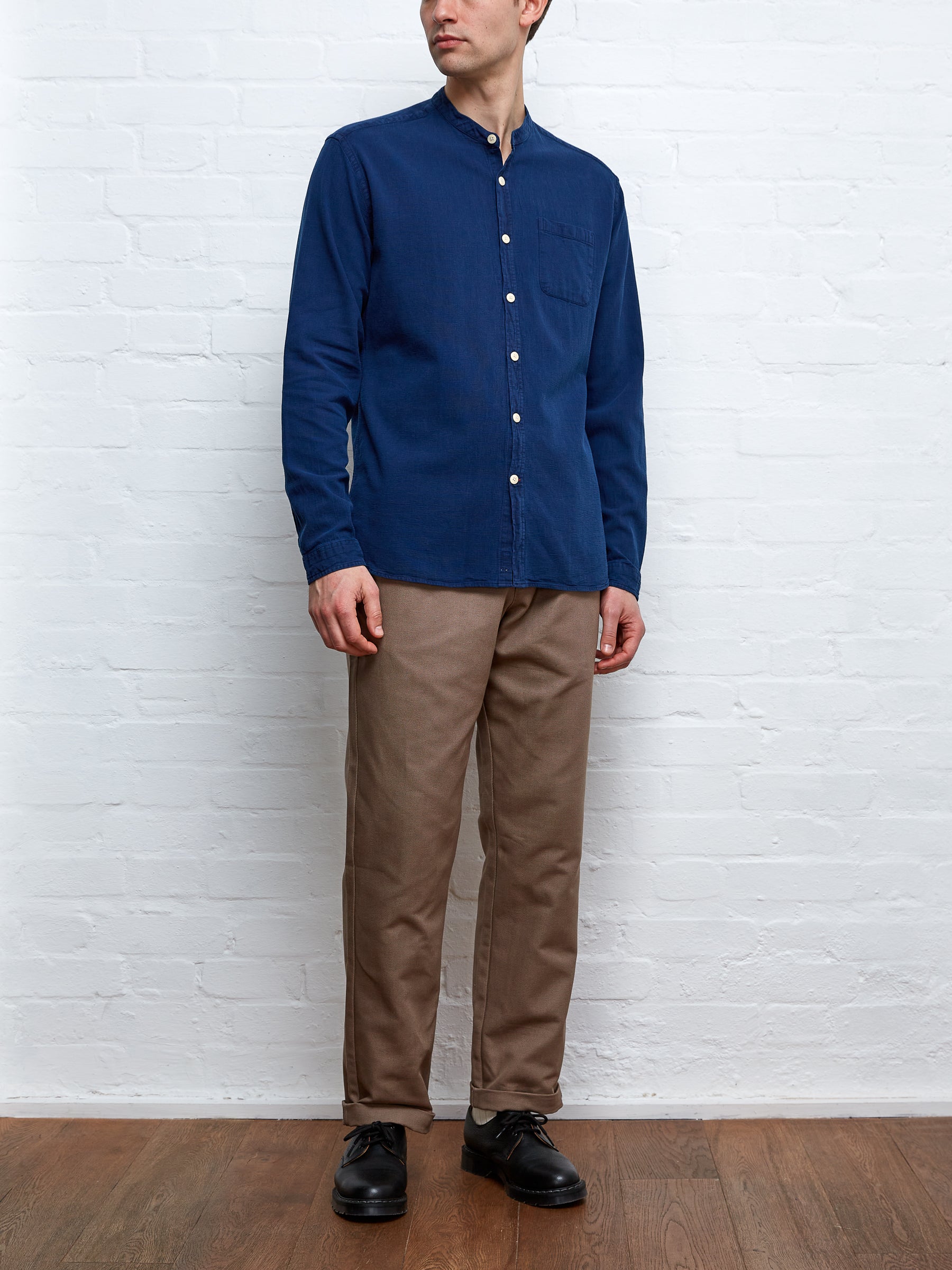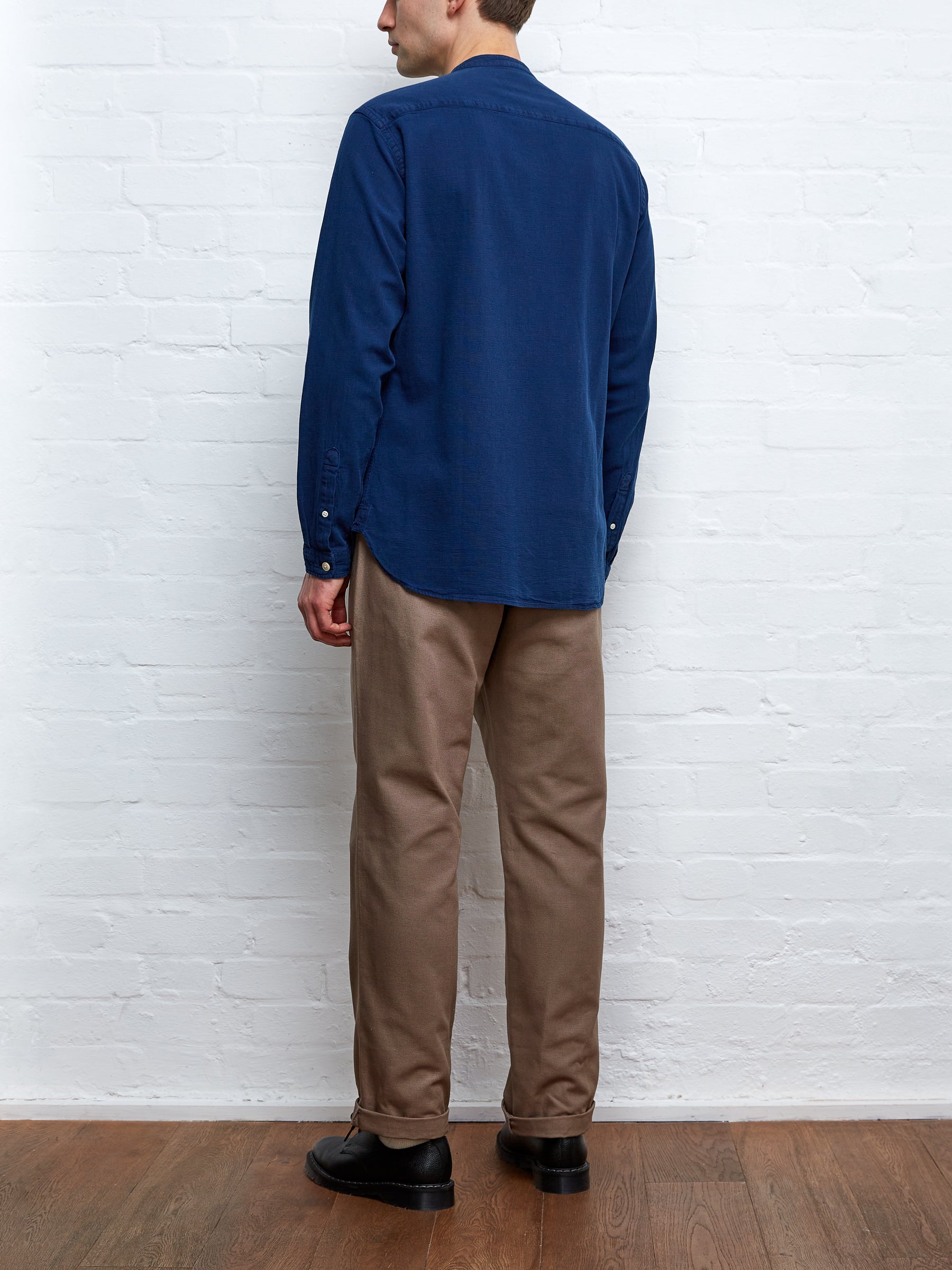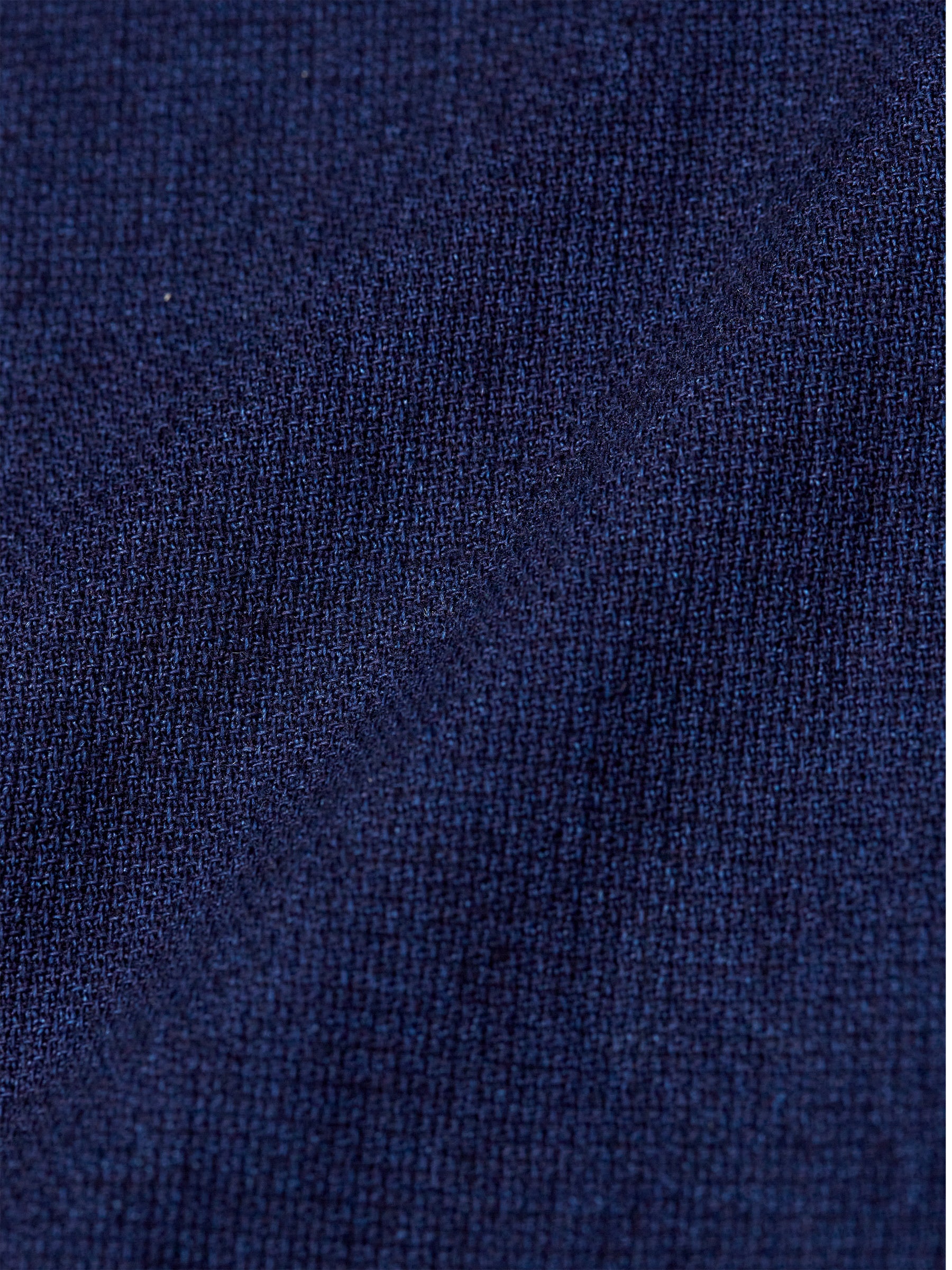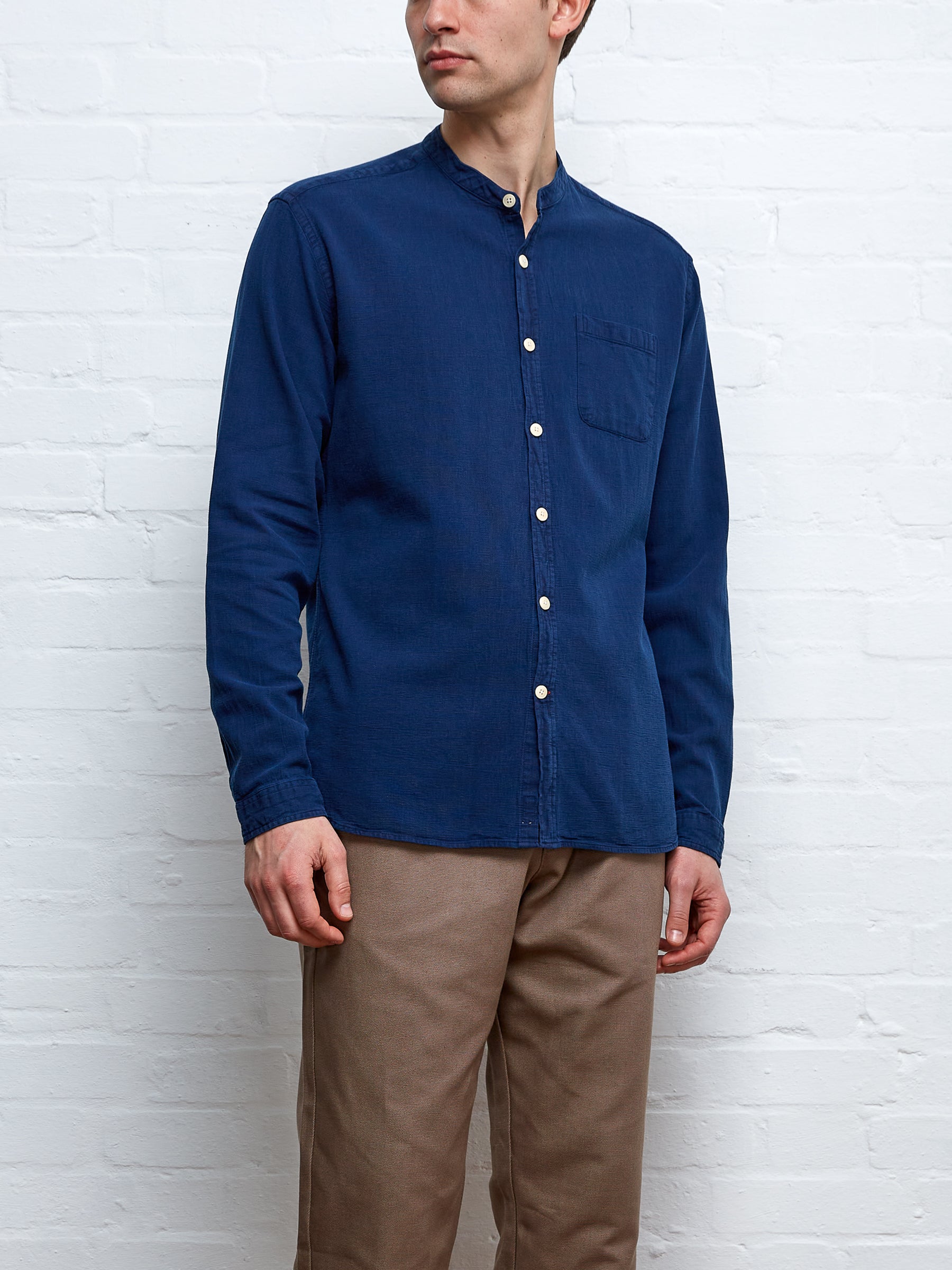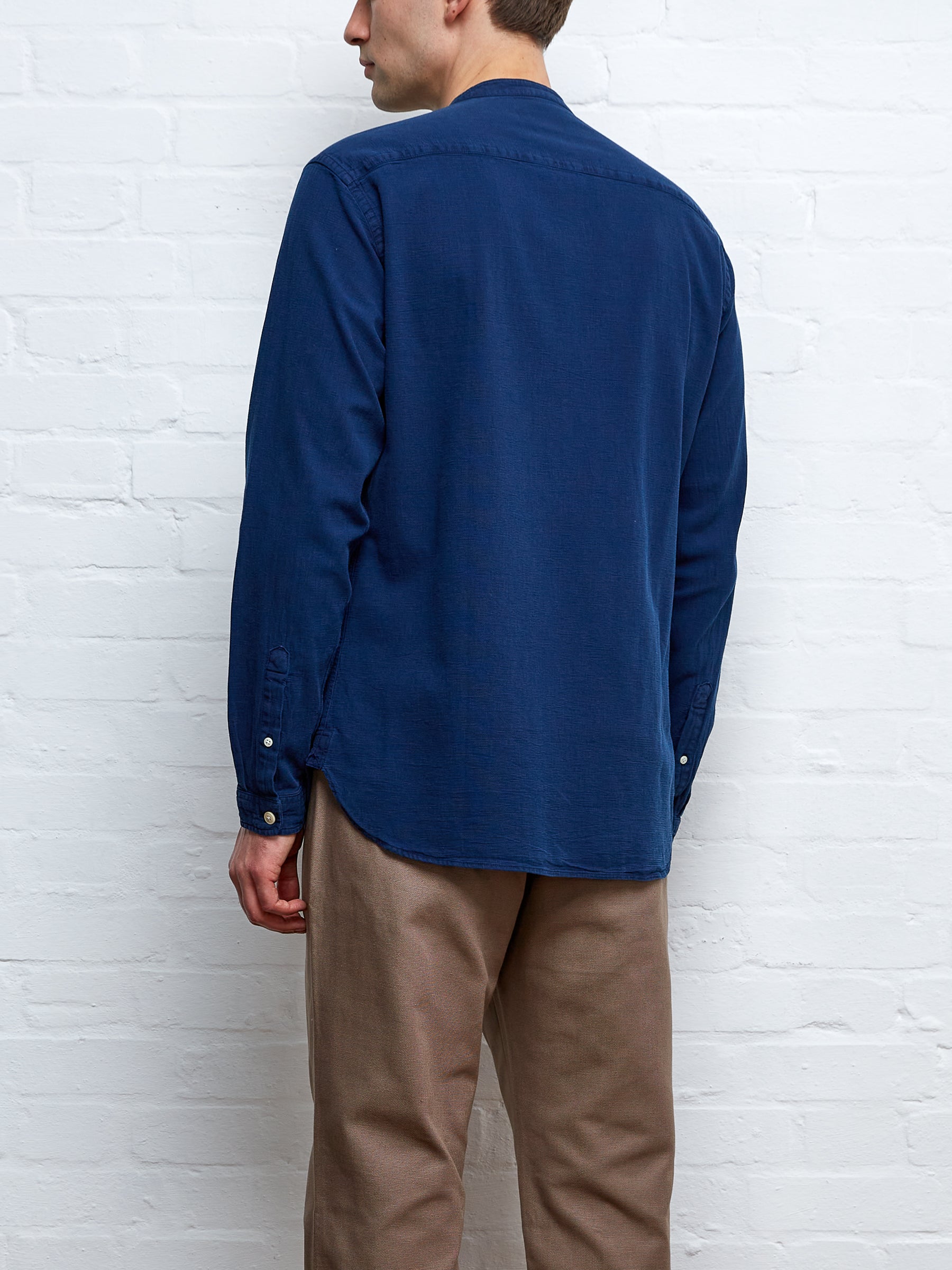The grandad shirt, otherwise known as the mandarin collar, band collar shirt or collarless shirt, has been something of a Marmite piece of menswear, depending on which 20th century decade you were born into. That’s understandable - after all, it’s a shirt without a collar, which you could argue defies the purpose of being a shirt at all. A collar, that most rudimentary detail of the shirt, serves a dual purpose: firstly to better frame one’s face (you can think of the collar as a sort of miniature pedestal) and secondly as a means to hide a tie about your neck. So to remove it from a shirt would be to remove the shirt’s defining features. Well, yes and no.

It’s thought by many that the genesis of the western grandad shirt can be traced back to one enterprising lady by the name of Hannah Montague, a New York native who in 1927 took it upon herself to cut off her husband’s shirt collar in order to better wash the garment separately. And with that stroke of female intuition was born the detachable collar, quite extinct these days but by all accounts a great innovation in 1930s menswear due to the fact that men were often required to wear white shirts that required different collar styles given their respective professions (such as the wing tips worn by legal professionals). Sartorial lore has it that certain rebellious types took to wearing the shirts without any collar attached, forgoing the need for a tie. Needless to say then, it was deemed attire for the British and Irish working classes or the 20s and 30s who rarely found occasion for the tie at any rate. Indeed, for many of them, a tie was not just unnecessary, it could cost them their lives if it happened to get caught in industrial machinery.
Of course, as with much of modern menswear, the collarless shirt actually bears it origins from British military uniform during World War I, where a grandad shirt was used as the standard issue greyback shirt as well as a number of khaki green wool undershirts during WWII. Yet its widespread adoption in menswear as a ‘fashionable’ item wouldn’t occur until the 50s, with Indian Prime Minister Jawaharlal Nehru’s preference for muslin grandad collars that brought the shirt back into favour. His style was aptly named the ‘Nehru collar’ and was probably more closely related to the mandarin collars worn by officials during the Chinese Qing era (whereas the western grandad shirts were literally collar-less, the eastern versions had a band with rounded edges that stood up from the shirt neck, a bit like an upside down Eton collar). While the Nehru collar was seen as a subcontinental style only, it was the arrival in India of four guys called John, Paul, Ringo and George who proceeded to go all in on Indian culture, including the wholesale adoption of the collarless shirt.

Today, the grandad shirt has become relevant once again with the widespread demise of the tie and the wholesale adoption of workwear and streetwear aesthetics, not to mention pride of place on the backs of the Peaky Blinders. At Oliver Spencer, we’ve always championed the classic shapes and silhouettes of workwear, so the grandad shirts is very close to our hearts. Of its myriad benefits, the foremost must be its ability to dress down traditional tailoring. The absence of a collar immediately refreshes a suit and removes all of the implied formality. What’s more, it is incredibly versatile: casual enough to hold its own as a summer shirt, while the lack of any collar means it can also be worn beneath a crew neck sweater without being visible. On the other hand, it still has enough structure to smarten up a pair of chinos or cotton shorts.
This season, we’ve expanded our grandad shirt range to include cotton, linen, organic cotton and seersucker styles in a wide variety of plain hues and patterned options. If you’ve never gone collarless before, trust us when we say it’s quite the liberation from the classic spread collar and is definitely something you should consider adding to your wardrobe.
